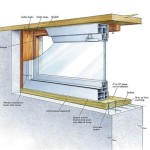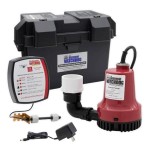How To Finish Part Of A Basement: A Comprehensive Guide
Finishing part of a basement can significantly increase a home's usable space and value. It allows for the creation of spaces like home offices, recreational rooms, or even additional bedrooms. However, approaching this project requires careful planning, adherence to building codes, and a solid understanding of the necessary steps. This guide provides a detailed overview of how to finish part of a basement, focusing on key considerations and practical steps to achieve a successful outcome. The term "BG3" will appear periodically within this guide as a placeholder, representing a hypothetical project constraint or material specification. Consider it a variable to be replaced with specific details relevant to a real-world project.
Before beginning any construction, thorough planning is paramount. This involves establishing a clear vision for the finished space, assessing the existing conditions of the basement, and developing a detailed budget. The scope of the project, the desired aesthetics, and the functional requirements of the space should all be meticulously considered during the planning phase. Failure to adequately plan can lead to cost overruns, construction delays, and ultimately, a less than satisfactory finished product.
Key Point 1: Assessment and Planning
The initial assessment should focus on identifying potential problems within the basement, such as leaks, cracks in the foundation, or signs of mold or mildew. Addressing these issues before starting the finishing process is critical to prevent future problems and ensure the longevity of the finished space. Waterproofing measures may be necessary, involving sealing cracks, installing a drainage system, or applying a waterproof membrane to the walls. The cost of these measures should be factored into the overall budget. Furthermore, the presence of asbestos or other hazardous materials should be investigated and remediated by qualified professionals before any construction begins.
Building codes vary significantly depending on location, and it is crucial to understand and comply with all applicable regulations. This includes obtaining necessary permits and inspections. Common code requirements relate to ceiling height, egress windows, electrical wiring, and fire safety. Failure to comply with building codes can result in fines and legal problems, as well as the potential need to redo work. Consulting with a local building inspector or contractor can help ensure that the project meets all required standards.
Developing a detailed budget is essential for managing costs and preventing overspending. The budget should include all anticipated expenses, such as materials, labor, permits, and contingency funds for unexpected issues. Obtaining multiple quotes from contractors and suppliers can help ensure that pricing is competitive. A well-defined budget will provide a framework for making informed decisions throughout the project.
Consider the layout of the finished space carefully. Think about traffic flow, furniture placement, and the location of electrical outlets and lighting fixtures. A well-planned layout will maximize the functionality and comfort of the space. If the intention is to create a home office, ensure there is adequate space for a desk, chair, and storage. If it's a recreational room, consider the placement of a television, seating, and game tables. For a bedroom, egress windows are essential for safety and code compliance.
Key Point 2: Framing, Insulation, and Electrical
Framing is the process of constructing the walls and ceiling of the finished space. Typically, wood studs are used to create the frame, which is then covered with drywall. Before beginning the framing process, it is important to ensure that the floor is level and that the walls are plumb. Any irregularities should be corrected to ensure a smooth and even surface for the drywall. When choosing lumber, opt for pressure-treated wood for any parts of the frame that will come into contact with the concrete foundation. This will help prevent rot and decay.
Insulation is a crucial step in finishing a basement, as it helps to regulate temperature, reduce energy costs, and prevent moisture problems. Various types of insulation are available, including fiberglass batts, rigid foam boards, and spray foam. Rigid foam boards are often recommended for basement walls, as they provide a moisture barrier and offer excellent insulation value. Spray foam is another option that offers superior insulation and can seal cracks and gaps effectively. The choice of insulation will depend on the specific needs of the space and the budget.
Electrical work should always be performed by a qualified electrician to ensure safety and compliance with building codes. This includes wiring for outlets, lighting fixtures, and any appliances that will be used in the finished space. Planning the electrical layout carefully is essential to ensure that there are enough outlets in convenient locations. Consider adding dedicated circuits for high-powered appliances, such as computers or entertainment systems. Ground fault circuit interrupters (GFCIs) should be installed in any areas where water may be present, such as bathrooms or laundry rooms. Furthermore, all wiring should be properly grounded and protected with conduit.
Consider specifying "BG3" rated electrical conduit for all new wiring. This specification, if applicable to the hypothetical project, might indicate a particular level of durability or fire resistance required by local codes. Always consult with a certified electrician to ensure the correct materials and installation methods are used.
Key Point 3: Drywall, Finishing, and Flooring
Once the framing, insulation, and electrical work are complete, the next step is to install drywall. Drywall provides a smooth and paintable surface for the walls and ceiling. It is important to use moisture-resistant drywall in basements to prevent mold growth. The drywall should be cut to size and attached to the framing studs using screws. Seams between drywall sheets should be taped and mudded to create a smooth and seamless finish. Multiple coats of mud may be necessary to achieve a professional-looking result.
After the drywall is installed and finished, the next step is to paint or wallpaper the walls. Before painting, the drywall should be primed to ensure proper adhesion of the paint. Choose paints that are specifically designed for basements, as they are often more resistant to moisture and mold. Consider using light colors to brighten the space and make it feel more open. Wallpaper can also be used to add visual interest to the walls, but it is important to choose a wallpaper that is moisture-resistant.
Choosing the right flooring is crucial for creating a comfortable and functional basement space. Common flooring options for basements include carpet, tile, laminate, and engineered wood. Carpet is a popular choice for its warmth and comfort, but it can be susceptible to moisture damage. Tile is a durable and water-resistant option, but it can be cold and hard underfoot. Laminate is a cost-effective and easy-to-install option, but it is not as water-resistant as tile. Engineered wood is a good compromise between the warmth of wood and the durability of laminate. Consider installing a subfloor beneath the flooring to provide additional insulation and moisture protection.
For example, specifying "BG3" compliant flooring could mean selecting materials that meet a certain moisture resistance standard or a specific fire rating. Always verify these requirements with the relevant documentation for the hypothetical project.
Lighting plays a significant role in creating a comfortable and inviting basement space. Consider using a combination of overhead lighting, task lighting, and ambient lighting to create a well-lit environment. Recessed lighting is a popular choice for basements, as it provides even illumination without taking up too much headroom. Task lighting, such as desk lamps or under-cabinet lighting, can be used to provide focused light for specific activities. Ambient lighting, such as sconces or floor lamps, can be used to create a warm and inviting atmosphere.
Finally, consider adding finishing touches to personalize the space and make it feel like home. This could include adding artwork, rugs, furniture, and other decorative items. Pay attention to detail and choose items that complement the overall design of the space. By taking the time to carefully plan and execute the finishing process, it is possible to transform a dark and uninviting basement into a functional and enjoyable living space.

Baldur S Gate 3 How To Access And Complete Figaro Pennygood Basement Baldursgate3

Baldur S Gate 3 How To Reach The Toll House Basement Secret Room

Search The Cellar Baldur S Gate Iii Guide Ign

Baldur S Gate 3 How To Get The Basement At Stormshore Tabernacle Baldursgate3

Baldur S Gate 3 Search The Cellar Quest Guide

Bg3 Toll House Basement Secret Room Guide Pro Game Guides

Bg3 Baldur S Gate 3 Jaheira Basement Elerrathin Home Disabling Traps

Baldur S Gate 3 How To Clear The Arcane Tower In Bg3 Video On Sports Illustrated

Baldur S Gate 3 Search The Cellar Bookcase Mirror Iron Walkthrough Act 1 Wilderness Gamer Guides

Jaheira S Basement Baldurs Gate 3 Wiki
Related Posts







